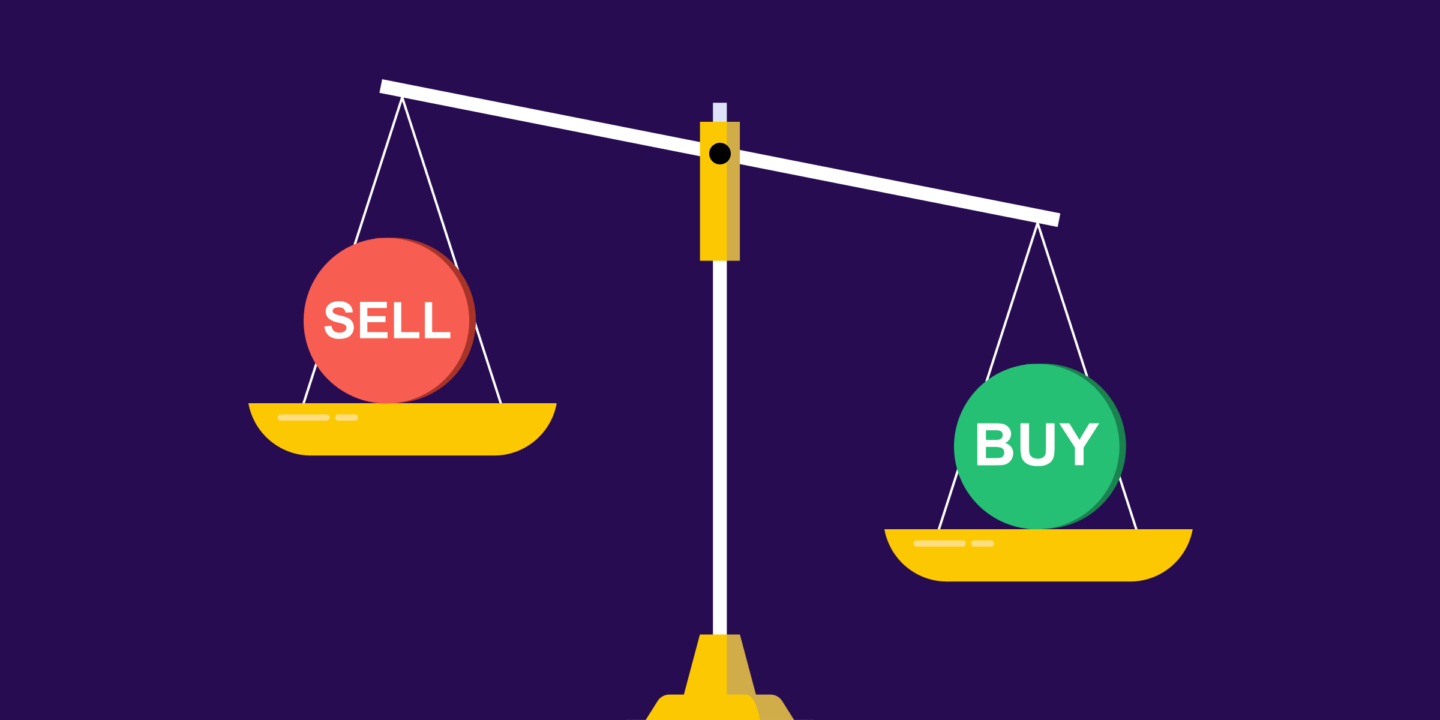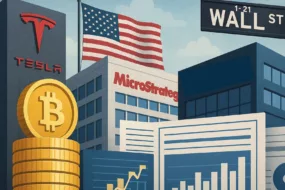
Before we get to what a bid-ask spread is, it’s important to understand that the price of any financial asset is nothing more than what a buyer is willing to pay and a seller is willing to accept.
For example, how do you know that the Hindustan Unilever Limited Stock is worth INR 2,600? Only when a buyer is willing to buy this stock at this price, and a seller is willing to sell to them at the same price.
The price a buyer is willing to pay for an asset is the ‘bid’ price. On the other hand, the price a seller demands for the asset is called the ‘ask’ price, and the difference between the two is called the ‘bid-ask spread.’
What Is the Bid-Ask Spread?
The bid-ask spread is the difference between the highest price a buyer is willing to pay (bid) and the lowest price a seller is willing to accept (ask) for a particular asset.
Let’s simplify this – If you are a buyer of an asset, you will try to buy it for as little as possible. At the same time, if you are a seller, you will always try to sell it for as high as possible. Everybody in the financial markets is doing exactly the same thing. All buyers/sellers place orders to buy at the lowest price and sell at the highest price possible.
When so many buyers and sellers place their buy and sell orders, the financial markets arrange them in order in the order book. All the buy orders (bids) are arranged from highest to lowest. The buy orders are prices at which sellers can sell their asset because somebody is willing to buy it at that price. While all the sell orders (asks) are arranged from the lowest to the highest. The sell orders are prices at which buyers can buy that particular asset because somebody is willing to sell at that price. This ensures that buyers/sellers get the best possible price for the asset at the moment.
To give you a visual view of the same, we have inserted a screenshot of an order book. The topmost order on the buy side of the order book is the best price ($21,111.05) at which you can sell your Bitcoins. While on the sell side of the order book is the best price ($21,112.55) at which you can buy Bitcoin.
The difference between ($21,112.55 – $21,111.05 = $1.5) is what we call the bid-ask spread.

How Does the Bid-Ask Spread Work?
The bid-ask spread is an essential concept while trading securities.
The size of the spread varies based on the asset’s liquidity, availability, and prevailing market conditions. It impacts how profitable or unprofitable a trade can be. Thus, understanding its working mechanism can help traders identify good trading opportunities and minimize risks.
1. Order book model
Centralized exchanges follow the ‘order book method.’ It is an electronic list of all buy and sell orders from traders for a particular security on an exchange. It showcases the prices that market participants are willing to trade the security for.
Order books give traders a sense of liquidity and depth in the market. Liquidity refers to the ease with which you can buy or sell a particular asset at a stable price. Market depth refers to the market’s ability to absorb relatively large market orders without impacting the price of a security by a great margin.
2. Interaction between the participants
Here, two key players are involved during trade execution — Price Takers (or Traders) and Market Makers.
Price takers are traders who simply buy or sell at the current market price without attempting to influence the price. They do not provide liquidity to the market, and they rely on the price movements of the market to generate profits.
Market makers are traders or firms that actively provide liquidity to the market by placing both buy and sell orders simultaneously. This means that they are willing to buy and sell an asset at different prices to ensure that there are always orders available for other traders to execute their trades. It helps to stabilize the market, prevent large price fluctuations and maintain a narrow bid-ask spread. Also, they have the ability to influence the price by buying or selling large amounts of a particular asset.
For instance, in this case, when a trader places a buy or a sell order, their broker will check for existing bids and asks from the market makers. Their trade will be executed if the trader’s order matches the counteroffer. If not, the broker will try to find the next best possible price, creating a spread.
Quick recap: Traders looking to buy assets will receive the ask price, and those who want to sell them get the bid price or vice versa.
To summarize, price takers take the liquidity provided by market makers to execute their trades. Market makers, in turn, rely on the trades made by price takers to make a profit from the spread between the bid and ask prices.
3. Limit order
The larger the spread, the more expensive it is to trade an asset. In such cases, you can execute a ‘limit order’ to reduce the cost.
A limit order is an order to buy/sell a security once its price reaches a specific price or better. For instance, a buy-limit order is executed only if the ask price falls at or below the level the buyer sets. Likewise, a sell limit order is executed only when the bid price is at or above the level the seller sets.
However, there is no guarantee that these orders will get executed.
Bid-Ask Spread Illustration
Let us show the mechanics of bid-ask spread through a simple example.
Suppose the bid price from a trader and the ask price from the market maker for a cryptocurrency are $99 and $100, respectively.
The spread is the difference between the two prices, which is $1. It means the seller is asking for $1 over and above the price proposed by the buyer. If the trade is executed, this $1 goes into the pocket of the market maker as transaction cost.
As you notice, the wider the spread, the more difficult and expensive it becomes to execute the trade. This spread will close if the buyer offers to buy the crypto at a higher price or the seller offers to sell the crypto at a lower price.
You can use the below formula to represent the bid-ask spread in ‘percentage terms.’
Bid-Ask Spread% = (Bid-Ask Spread / Lowest ask price) x 100.
For the above example, the spread% is (1 / 100) x 100 = 1%.
How Is It Related to Liquidity?
There is a negative correlation between the bid-ask spread and the liquidity of the asset.
Liquidity measures how quickly and easily an asset can be bought or sold at a stable price. A high level of liquidity means one can exchange the asset without much disruption to its market price. Low liquidity indicates that trading an asset may need greater effort and cause large market price fluctuations.
Bid-ask spread calculates the difference between the selling price (ask) and the buying price (bid). When the spread is narrow, there is more liquidity as more buyers and sellers are willing to enter into trades at a price close to the market price. In contrast, the wider the spread, the less liquid the market. Fewer buyers or sellers are willing to participate in a trade. So it takes longer to make a transaction happen.
Knowing when markets are liquid or illiquid can help us identify when to trade an asset.
What Are the Other Factors Influencing the Bid-Ask Spread?
Apart from market liquidity, the size of the bid-ask spread can vary significantly depending on other parameters, like volatility and competition among buyers and sellers.
1. Competition
By competition, we mean the trading volume of an asset.
The number of buyers and sellers in the market directly impacts the size of the bid-ask spread. Higher trading volume means a tighter bid-ask spread as buyers and sellers compete to get the best prices. Whereas lesser volume leads to wider bid-ask spreads as fewer buyers and sellers compete for the best prices.
2. Volatility
Volatility measures how much an asset’s price changes over time.
More volatile assets tend to have higher bid-ask spreads as buyers and sellers will be more cautious while trading due to higher risk.
Conclusion
Bid-ask spread may seem immaterial, but it costs real money to traders. It is like a transaction cost that goes to the market intermediaries for managing the trade orders. The level of spread impacts the profit you can realize over an asset. The wider the spread, the more expensive the trade is, and vice versa.
Also, it acts as an indicator that measures the liquidity level of financial assets. Highly liquid assets have smaller spreads, suggesting increased activity among buyers and sellers.
Thus, using the bid-ask spread, one can make better decisions when trading assets.
FAQs
1. What is the proper use of the bid and ask in trading?
The bid-ask spread helps in identifying the liquidity levels of a particular crypto in the market. Highly-liquid assets are easy to execute and don’t attract high transaction costs. But illiquid assets can lead to high transaction costs, and in some cases, the trade might not get executed at all.
2. What is a wide bid-ask spread?
A wider bid-ask spread indicates that fewer buyers or sellers are willing to participate in a trade. So it takes longer to make a transaction happen. It also means the trade would be quite expensive to execute.
3. What is a narrow bid-ask spread?
When the spread is narrow, there is more liquidity as more buyers and sellers are willing to enter into trades at a price close to the market rate. This is a result of buyers/sellers competing to trade in a particular asset.





